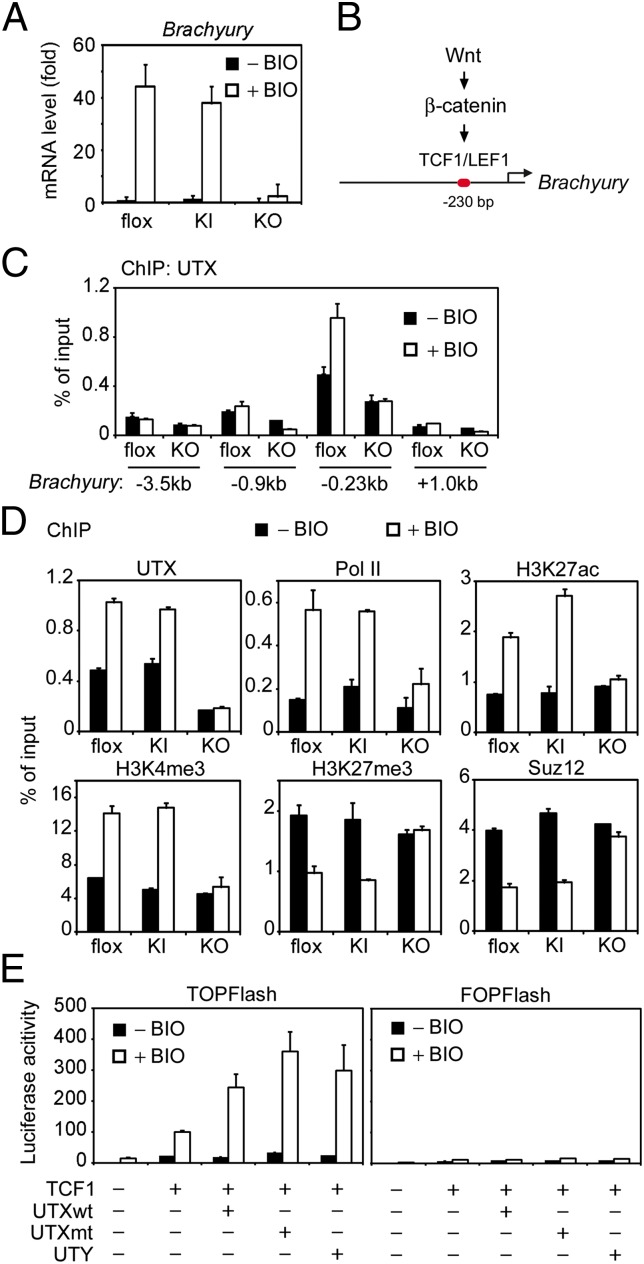Fig. 4.
UTX is required for Wnt/β-catenin signaling-induced Brachyury expression. (A–D) flox, KI, and KO ES cells were passaged twice on 0.1% gelatin-coated dishes to remove feeder cells and then cultured on gelatin-coated dishes. Cells were treated with 2 μM BIO for 48 h in the absence of LIF. (A) UTX, but not its H3K27 demethylase activity, is required for BIO-induced Brachyury expression in ES cells. Brachyury expression was determined by qRT-PCR. (B) Schematic representation of Brachyury proximal promoter containing the Wnt/β-catenin signaling-responsive TCF1/LEF1 binding site. (C) ChIP assays of UTX on the indicated regions of Brachyury gene. (D) ChIP assays of levels of UTX, RNA polymerase II (Pol II), indicated histone modifications, and the Suz12 subunit of PRC2, around the TCF1/LEF1 binding site on Brachyury proximal promoter. (E) UTX and UTY function as TCF1 coactivators independent of demethylase activity. HeLa cells were transfected with 30 ng of TCF1 plasmid, 30 ng of TOPFlash or FOPFlash, and 150 ng of pCS2 plasmids expressing wild-type (UTXwt) or enzyme-dead (H1146A and E1148A) mutant UTX (UTXmt) or UTY. Twenty-four hours later, cells were treated with 2 μM BIO for 24 h, followed by luciferase assays using dual-luciferase assay kit (Promega).

